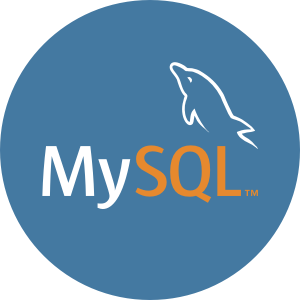MySQL vs Apache Pinot
A detailed comparison
Compare MySQL and Apache Pinot for time series and OLAP workloads
Learn About Time Series DatabasesChoosing the right database is a critical choice when building any software application. All databases have different strengths and weaknesses when it comes to performance, so deciding which database has the most benefits and the most minor downsides for your specific use case and data model is an important decision. Below you will find an overview of the key concepts, architecture, features, use cases, and pricing models of MySQL and Apache Pinot so you can quickly see how they compare against each other.
The primary purpose of this article is to compare how MySQL and Apache Pinot perform for workloads involving time series data, not for all possible use cases. Time series data typically presents a unique challenge in terms of database performance. This is due to the high volume of data being written and the query patterns to access that data. This article doesn’t intend to make the case for which database is better; it simply provides an overview of each database so you can make an informed decision.
MySQL vs Apache Pinot Breakdown
 |
 |
|
| Database Model | Relational database |
Columnar database |
| Architecture | MySQL uses a client-server model with a multi-layered server design. It supports the SQL query language and offers various storage engines, such as InnoDB and MyISAM, for different use cases. MySQL can be deployed on-premises, in the cloud, or as a managed service. |
Pinot can be deployed on-premises, in the cloud, or using a managed service |
| License | GNU General Public License v2 (for the open-source Community Edition) |
Apache 2.0 |
| Use Cases | Web applications, e-commerce, data warehousing, content management systems, business applications |
Real-time analytics, OLAP, user behavior analytics, clickstream analysis, ad tech, log analytics |
| Scalability | Supports vertical scaling by adding more resources to a single node; horizontal scaling can be achieved through replication, sharding, and third-party tools |
Horizontally scalable, supports distributed architectures for high availability and performance |
MySQL Overview
MySQL is an open source relational database management system that was first released in 1995. It is one of the most popular databases worldwide due to its ease of use, reliability, and performance. MySQL is widely used for web applications, online transaction processing, and data warehousing. Oracle Corporation acquired MySQL in 2010, but it remains open source software with an active community of contributors.
Apache Pinot Overview
Apache Pinot is a real-time distributed OLAP datastore, designed to answer complex analytical queries with low latency. It was initially developed at LinkedIn and later open-sourced in 2015. Pinot is well-suited for handling large-scale data and real-time analytics, providing near-instantaneous responses to complex queries on large datasets. It is used by several large organizations, such as LinkedIn, Microsoft, and Uber.
MySQL for Time Series Data
MySQL can be used for storing and analyzing time series data, but it will not be as efficient as a dedicated time series databases. MySQL’s flexibility and support for various indexing techniques can make it a suitable choice for small to medium sized time series datasets. For large-scale time series data workloads, with high write throughput or use cases where low latency queries are required, MySQL will tend to struggle unless highly customized.
Apache Pinot for Time Series Data
Apache Pinot is a solid choice for working with time series data due to its columnar storage and real-time ingestion capabilities. Pinot’s ability to ingest data from streams like Apache Kafka ensures that time series data can be analyzed as it is being generated, in addition to having options for bulk ingesting data.
MySQL Key Concepts
- Table: A collection of related data organized in rows and columns, which is the primary structure for storing data in MySQL.
- Primary Key: A unique identifier for each row in a table, used to enforce data integrity and enable efficient querying.
- Foreign Key: A column or set of columns in a table that refers to the primary key in another table, used to establish relationships between tables.
Apache Pinot Key Concepts
- Segment: A segment is the basic unit of data storage in Pinot. It is a columnar storage format that contains a subset of the table’s data.
- Table: A table in Pinot is a collection of segments.
- Controller: The controller manages the metadata and orchestrates data ingestion, query execution, and cluster management.
- Broker: The broker is responsible for receiving queries, routing them to the appropriate servers, and returning the results to the client.
- Server: The server stores segments and processes queries on those segments.
MySQL Architecture
MySQL is a relational database management system that uses SQL for defining and manipulating data. It follows the client-server model, where a MySQL server accepts connections from multiple clients and processes their queries. MySQL’s architecture includes a storage engine framework that allows users to choose from different storage engines, such as InnoDB, MyISAM, or Memory, to optimize the database for specific use cases.
Apache Pinot Architecture
Pinot is a distributed, columnar datastore that uses a hybrid data model, combining features of both NoSQL and SQL databases. Its architecture consists of three main components: Controller, Broker, and Server. The Controller manages metadata and cluster operations, while Brokers handle query routing and Servers store and process data. Pinot’s columnar storage format enables efficient compression and quick query processing.
Free Time-Series Database Guide
Get a comprehensive review of alternatives and critical requirements for selecting yours.
MySQL Features
ACID compliance
MySQL supports transactions and adheres to the ACID (Atomicity, Consistency, Isolation, Durability) properties, ensuring data integrity and consistency.
Scalability
MySQL can scale both vertically and horizontally, depending on the storage engine and configuration.
Replication and high availability
MySQL supports various replication techniques, including master-slave and master-master replication, to provide high availability and fault tolerance.
Apache Pinot Features
Real-time Ingestion
Pinot supports real-time data ingestion from Kafka and other streaming sources, allowing for up-to-date analytics.
Scalability
Pinot’s distributed architecture and partitioning capabilities enable horizontal scaling to handle large datasets and high query loads.
Low-latency Query Processing
Pinot’s columnar storage format and various performance optimizations allow for near-instantaneous responses to complex queries.
MySQL Use Cases
Web applications
MySQL is a popular choice for powering web applications, content management systems, and e-commerce platforms due to its flexibility, ease of use, and performance.
Online transaction processing (OLTP)
MySQL is suitable for OLTP systems that require high concurrency, fast response times, and support for transactions.
Data warehousing
While not specifically designed for data warehousing, MySQL can be used for small to medium-sized data warehouses, leveraging its support for indexing, partitioning, and other optimization techniques.
Apache Pinot Use Cases
Real-time Analytics
Pinot is designed to support real-time analytics, making it suitable for use cases that require up-to-date insights on large-scale data, such as monitoring and alerting systems, fraud detection, and recommendation engines.
Ad Tech and User Analytics
Apache Pinot is often used in the advertising technology and user analytics space, where low-latency, high-concurrency analytics are crucial for understanding user behavior, optimizing ad campaigns, and personalizing user experiences.
Anomaly Detection and Monitoring
Pinot’s real-time analytics capabilities make it suitable for anomaly detection and monitoring use cases, enabling users to identify unusual patterns or trends in their data and take corrective action as needed.
MySQL Pricing Model
MySQL is available in multiple editions with different feature sets and pricing models. The MySQL Community Edition is open source and free to use, while the MySQL Enterprise Edition includes additional features, such as advanced security, monitoring, and management tools, and requires a subscription. Pricing for the Enterprise Edition depends on the number of server instances and the level of support required.
Apache Pinot Pricing Model
As an open-source project, Apache Pinot is free to use. However, organizations may incur costs related to hardware, infrastructure, and support when deploying and managing a Pinot cluster. There are no specific pricing options or deployment models tied to Apache Pinot itself.
Get started with InfluxDB for free
InfluxDB Cloud is the fastest way to start storing and analyzing your time series data.